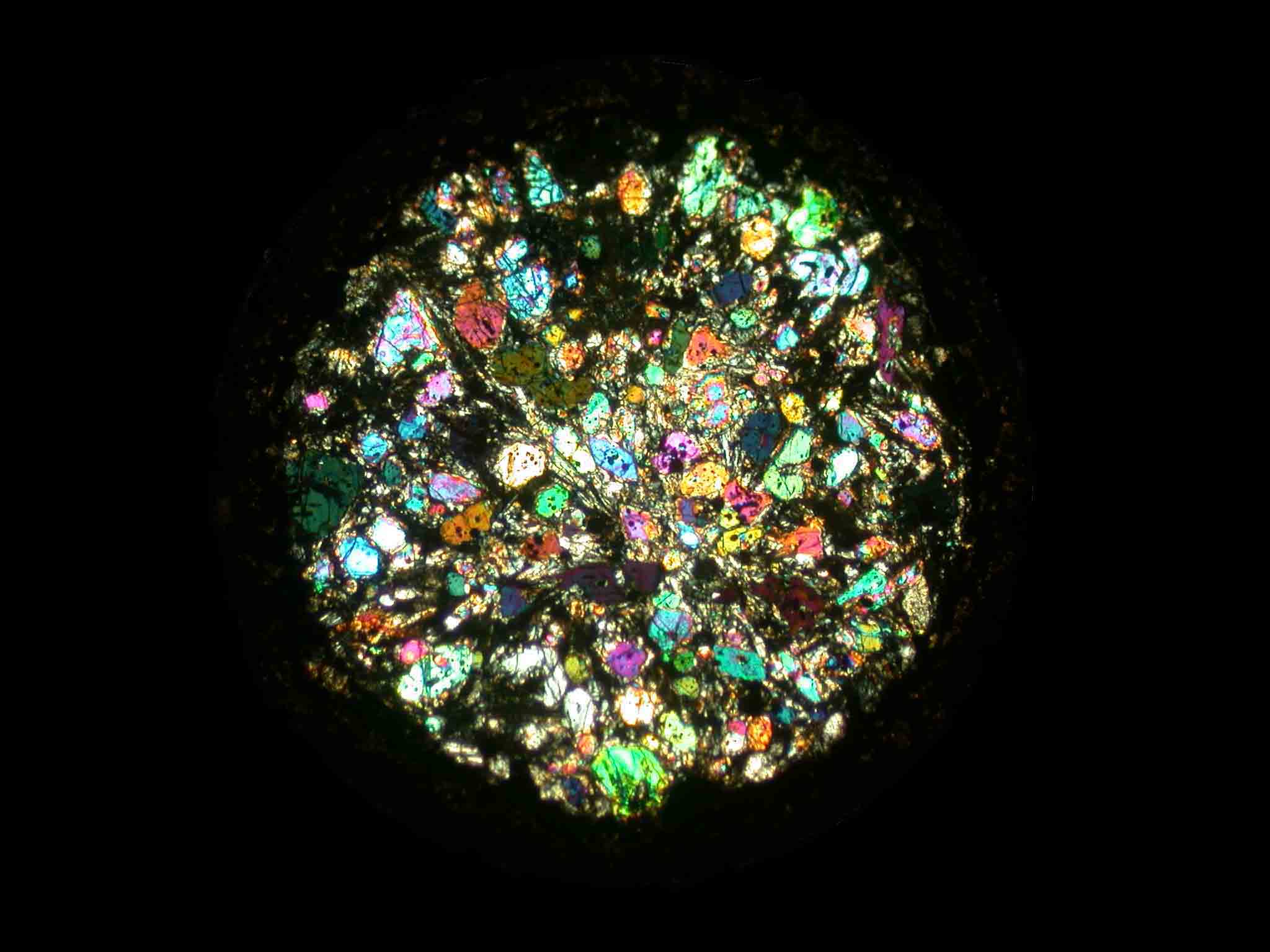|
Chondrules began as molten droplets in the great disk of gas and particles that eventually came together to form the sun and planets. They range in size from a fraction of a millimeter to a few millimeters in diameter. The chondrule above -- from a slice of the Allende meteorite at the American Museum of Natural History -- is 2.2 millimeters across and has been photographed through a microscope with cross-polorized light to reveal its complex crystalline structure. Such a structure indicates that chondrules were formed by rapid heating and cooling, but how that process came about remains a subject of debate. The oldest meteorites, like Allende, have preserved the most pristine chondrules as vestiges of the earliest events in the life of the solar system.
|
